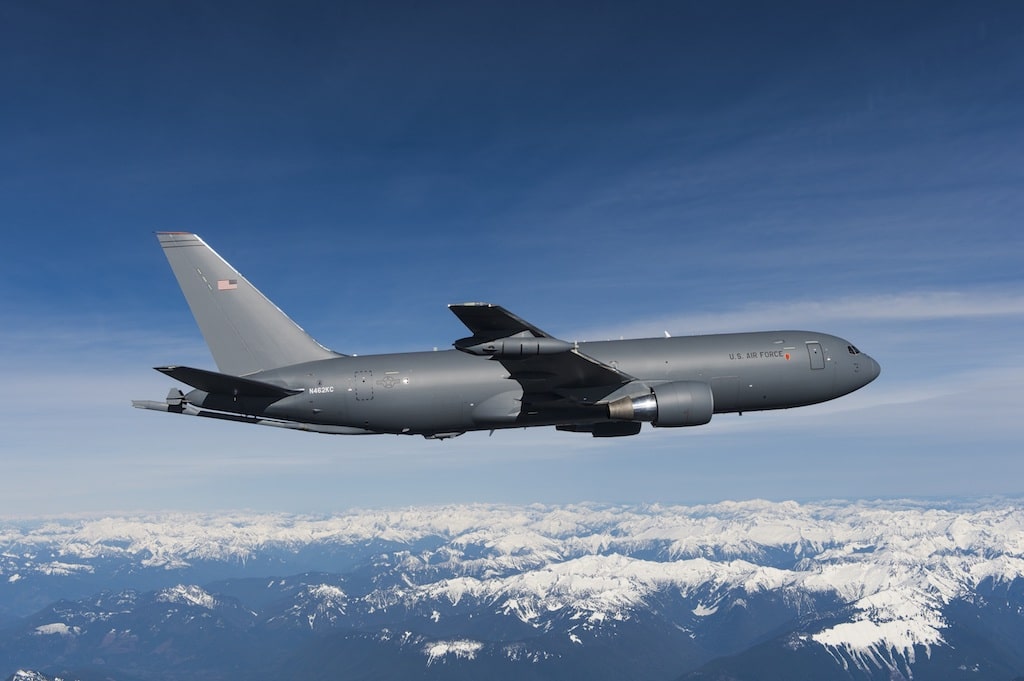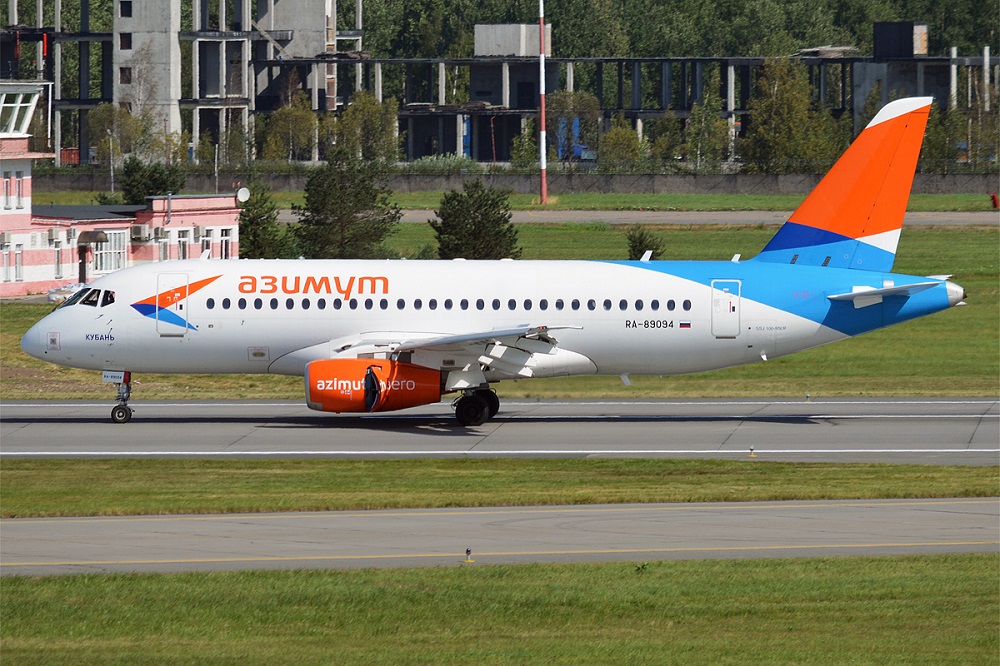Aviation
Boeing Awarded U.S. Air Force Contract for 15 KC-46A Tankers

The U.S. Air Force has expanded its fleet of the most technologically advanced multi-mission aerial refueler by awarding Boeing a $2.3 billion contract for the ninth production batch of 15 KC-46A Pegasus tanker aircraft. There are currently 128 KC-46A Pegasus under contract with the U.S. Air Force, 68 of which have been delivered and are in use across the globe.
The KC-46A Pegasus delivers crucial fuel and data for the fleet, as well as cargo, personnel and aeromedical transportation for joint force rapid mobility, global reach and agile combat employment.
Japan Orders Two More Boeing KC-46A Tankers(Opens in a new browser tab)
Last year, the U.S. Air Force Air Mobility Command approved the KC-46A for global operations including combat deployment. The Pegasus continues to demonstrate its agile combat employment capabilities, recently completing a 42-hour endurance flight supporting a U.S. Air Force Bomber Task Force mission in the Indo-Pacific region.
During 2022, KC-46A aircraft operating in a series of U.S. Air Force global employment exercises in the European theater, Indo-Pacific region and the Middle East performed at a greater than 95% mission capable rate, demonstrating the aircraft’s reliability and combat readiness.
L3 Harris to Develop New Agile Tanker via KC-390 to Support Air Force(Opens in a new browser tab)
Boeing builds KC-46A aircraft on the 767 production line in Everett, Wash., supported by a supplier network of about 37,000 American workers employed by more than 650 businesses throughout more than 40 U.S. states. With Boeing’s in-line production, the KC-46A is designed and built as a tanker from day one — not a post-production conversion —making the Pegasus uniquely suited to integrate advanced technology for fleet data connectivity and combat-ready defensive features, as well as new capabilities as the needs of the mission evolve.
Boeing is on contract for 138 KC-46A Pegasus tankers globally. Boeing has delivered two of six KC-46A tankers to the Japan Air Self-Defense Force, and is on contract for four KC-46A tankers for the Israel Air Force. The expanding global fleet creates commonality and interoperability efficiencies and mission-readiness advantages for the U.S. Air Force and allies.

Aviation
Flames on the Runway: Russian Jet Sparks Emergency in Turkey

A dramatic incident unfolded at Turkey’s Antalya Airport on Sunday night when a Russian passenger plane caught fire shortly after landing.
The Azimuth Airlines Sukhoi Superjet 100, arriving from Sochi International Airport in Russia, was carrying 89 passengers and six crew members. Thankfully, all onboard were safely evacuated without any injuries reported.
Air India to Launch aircraft maintenance training institute in Bengaluru
The fire broke out after the aircraft landed at 9:34 p.m. local time, prompting the pilot to issue an emergency call. Evacuation footage shared by Russian media site ЧП Сочи captured the tense moments as passengers slid down emergency slides, with some seen carrying large pieces of luggage despite the urgency of the situation.
Investigators at the time highlighted the critical impact of passengers retrieving their belongings, which obstructed others from escaping the burning aircraft.
This country tops visa rejections in the popular Schengen countries
Although no injuries were reported this time, the episode serves as a stark reminder of the importance of prioritizing life over possessions during emergencies. Seconds can mean the difference between survival and tragedy in such situations.
In response to the incident, Turkey’s transportation ministry confirmed that efforts were underway to remove the damaged aircraft from the runway. While arrivals at Antalya Airport were temporarily suspended, departures continued from a nearby military-operated runway to minimize disruptions.
The cause of the fire is yet to be determined, but the swift evacuation ensured a safe outcome for everyone on board.
-

 Aviation2 months ago
Aviation2 months agoMicrosoft Flight Simulator Raises $3 Million to Bring Back the An-225 Mriya
-

 Airlines2 months ago
Airlines2 months agoQatar Citizens Can Travel to the United States Without a Visa
-

 Aviation2 months ago
Aviation2 months agoQatar Airways bans these new Electronic Devices on plane
-

 Airlines2 months ago
Airlines2 months agoJapan Airlines Rolls Out Free Domestic Flights to International Passengers
-

 Defence2 months ago
Defence2 months agoWhich Country Has the Largest Fleet of Fighter Aircraft?
-

 Travel2 months ago
Travel2 months agoQatar Airways Launches Four Additional Flights from Amsterdam
-

 Airport2 months ago
Airport2 months agoWestern Sydney Airport Welcomes Its First Plane After 6 Years of construction
-

 Airlines4 days ago
Airlines4 days agoDAMAC Air: Dubai’s New Luxury Airline Offers Free Flights for Registration








